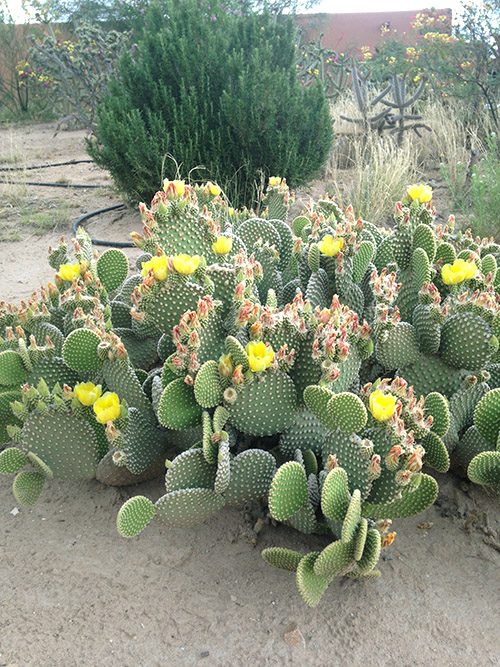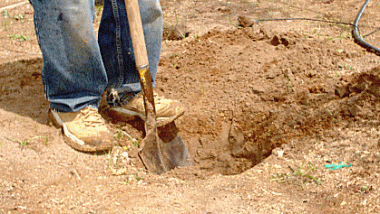Last updated on May 10th, 2025 at 08:33 am
Who says we can’t have “Colorful shrubs and plants in the Southwest”? Here is a list of “Easy care southwest landscaping plants”.
The Beautiful Cholla Cactus (Opuntia genus)
You plant this cactus and forget about it. It blooms in mid-spring lasting till early summer. They come in bright pink shown below and a showy yellow. Perfect for that hot corner of your rock garden or landscape design.southwe
The Desert Bird of Paradise (Caesalpinia gilliesii)
This is more commonly known as the bird of paradise but in the southwestern desert, it’s called the Desert Bird of Paradise. Not as showy as its cousin the Red Bird Of Paradise but hardier. Easy care and lower water. Water about 1-2 times per week when first planted. Then cut back to about once per week…even less during the cooler months.
Easy care Southwest landscaping plants
The Majestic Ocotillo Fouquieria splendens
The Ocotillo is indigenous to the Sonoran and Chihuahuan Deserts of the Southwest. They grow about 20 ft. tall and wide. Small leaves with gorgeous orange bloom at the tip of the branches. Very drought tolerant but still requires watering about 1-2 times per week when first planted. Once a month during the winter season.
Likes: Easy care no trimming and can be used as a screen to keep out unwanted human traffic. Low water, bright orange blooms. Dislikes: It stops blooming after 3 maybe 4 weeks.
The Hardy Red Oleander (Nerium)
This is a hardy plant for the southwestern U.S. It loves full hot Sun and will bloom in early May and well into mid-July. They can grow up to 15ft. tall and about 10ft wide. Great plant for privacy border. There is the white, pink, and dwarf variety. Trim them to the size you want and use them as a colorful hedge.
What I like about this plant are the colorful long-lasting flowers, hardy throughout the Southwest, and the low water requirements. You could also plant them next to each other. This would make a beautiful red, white, and pink landscape effect.
What I don’t like is the high toxicity levels of this plant.
According to Wikipedia here is what they have to say about the toxic levels of Oleander.
However, despite the common “poisonous” designation of this plant, very few toxic events in humans have been reported. According to the Toxic Exposure Surveillance System, in 2002, 847 human exposures to oleander were reported to poison centers in the United States. Despite this exposure level, from 1985 through 2005, only three deaths were reported. Click here to read more…
Desert Willow (Chilopsis linearis)
The Beautiful wild Desert Willow. There are three main varieties. The Burgundy Desert Willow and the Timeless beauty Desert Willow. The flower on the Burgundy is brighter and typically lasts longer throughout the summer season. The Timeless Beauty does not produce seed pods. Perfect for those who want less maintenance during the fall.
There is also the Rio Saldo Variety which is the most common in and around the desert Southwest. All are very drought tolerant once established. Plant them in full sun but not in an area where water will accumulate or stand for a long period of time.
The easy-to-care-for Sotol (Dasylirion wheeleri)
is also called the Desert Spoon. Does well throughout the Southwestern United States. Plant them in rock gardens or in the hottest part of your landscape. It will grow a long ivory-white colored flowering stem or plume in mid-summer. It will shoot out about 15ft. above the plant. The foliage has a grayish-greenish color with sharp saw-tooth edges.
The Red Bird of Paradise (Caesalpinia pulcherrima)
Yes, it grows in Las Cruces and surrounding areas. But it takes exceptional care to make it survive the cold winters. It loves the hot southwestern heat. Plant it in the blazing hot sun or in rock gardens. It does well with reflected heat from walls, rocks, or cement. Cut it back when it goes into dormancy, somewhere around early November. Cover the plant with mulch or large stones to keep the root warm during the cold seasons. Also called Pride or Barbados, Peacock flower. Other Bird of Paradise Plants.
Agave Americana
Large thick succulent-type fronds ending with a sharp needle-like point. Also called a century plant. A slow-growing Agave will die after growing its large spike iridescent green color. But will propagate itself through the root system.
Many think the plant will live around 100 years of age thus its common name, but depending on what region or where it is placed it could be 40-50 years before it blooms. After it dies it will propagate itself through the root system.
Drought tolerant and should be used as a stand-alone plant. Great for xeriscaping or desert gardens.

Russian Sage Perovskia atriplicifolia
Silver gray foliage with bright lavender spike blooms. This plant loves the desert Southwest. It is drought-tolerant and can tolerate poor soil. Use it in rock gardens or xeriscaping landscapes. It can be an invasive type of plant so be careful where it is planted. They have long-lasting blooms that start in mid-spring and last until late summer.

Yellow prickly pear Cactus – Opuntia
Easy care cactus. The one pictured below is the yellow variety. There are red and pink varieties. Use them in rock gardens and xeriscaping areas. Plant them water once and basically let them thrive in hot conditions. I would not recommend fertilizers except for cactus juice.
Hollyhocks (Alcea rosea)
There are numerous varieties of Hollyhocks but the majority of them love the southwest deserts. They like the full sun but can tolerate some shade. They do like moist soil, so watering is essential when first planted. These plants are considered perennials but will not come back after the 3rd or 4th year of their life. However, they will eventually become drought tolerant once it has become well established. The seeds will fall into the ground and will continue to provide your area with more Hollyhocks providing you water the area. Fertilize about once per month during the growing season.

Mexican Elder trees or (Sambacus Mexicana)
Are good small ornamental shade trees. They love the spring and fall seasons and it is when they look their best. However, they are not drought-tolerant trees. Mexican Elder trees like lots of water during the hot mid-summer months. They do produce pale yellow blooms during mid-spring.
Trim the bottom half of the tree limbs to produce a good small canopy for shade. It is also best to prune dead limbs in early spring, this will help with better looks throughout the summer months.

Greenhouse Manager, Master Gardener, and Webmaster.
If you have any questions or enjoyed this post, feel free to share your thoughts in the comments below.












An interesting plant I only began growing in the last two years is the Mexican petunia (Ruellia brittoniana). These do very well in large pots, and winter over just fine, if you water them. They fill up containers fairly quickly and will need watered every day, as they’re in containers. I have not tried growing them in the ground. Perhaps someone has had experience with that. Do you sell Mexican petunias at Color Your World?
Yes, the Mexican Petunia is an interesting plant. It’s also called the “British Ruellia” which seems odd to me because we are nowhere near Britain? Anyway, It does well in the hot summer heat and will thrive in pots or in the ground. They are easy to propagate and will bloom all summer long! They are a good perennial flowering plant. We do sell them at both locations.
Thanks for the comment Scott.
Paul
Very nice pictures!
Thanks, Mary.